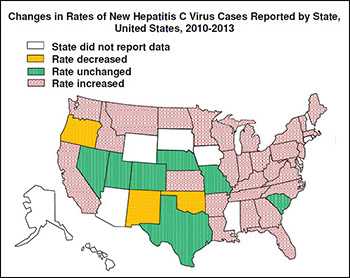Informational Brief on CDC Hepatitis Funded Program - Hepatitis Prevention: Young Persons Who Inject Drugs
People who inject drugs are at risk for hepatitis B and hepatitis C infection through the sharing of needles and drug-preparation equipment. CDC estimates that approximately 30,000 new hepatitis C cases (referred to as “acute” cases) and 20,000 new cases of hepatitis B occurred in 2013. From 2010-2013, new HCV infections increased by more than 150% nationwide. This new epidemic of HCV is fueled by the increase in prescription opioid abuse and heroin use.

To address the high rates of viral hepatitis infection among young persons who inject drugs, there is a need to:
- Prioritize interventions to reduce new hepatitis infections more effectively.
- Create age-appropriate (e.g., young adult) hepatitis intervention and prevention strategies.
- Explore the influence of injection drug use behaviors and injection practices within social networks.
CDC has awarded funding for two projects to:
- University of New Mexico – Albuquerque, NM
- University of Cincinnati – Cincinnati, OH
To increase testing and ensure persons infected with hepatitis B and hepatitis C have access to life-saving treatment and care, these programs:
- Collect information from interviewing and testing people who inject drugs who reside in southern Ohio, adjacent Kentucky or West Virginia, and two regions of New Mexico.
- Develop and implement an approach to bring a network of primary health-care providers, medical specialists experienced in the treatment of hepatitis B and hepatitis C, community-based organizations, and health departments together to improve testing for hepatitis B and hepatitis C infection among young people ages 18-30 years.
- Develop and implement a comprehensive strategy to enroll hepatitis B and hepatitis C infected persons into various prevention, care, support, and treatment services.
Funding
Funding for the three-year project period is expected to be approximately $599,831 each year. These funds are not being used to support syringe services programs.
- Page last reviewed: June 8, 2016
- Page last updated: June 8, 2016
- Content source:


 ShareCompartir
ShareCompartir